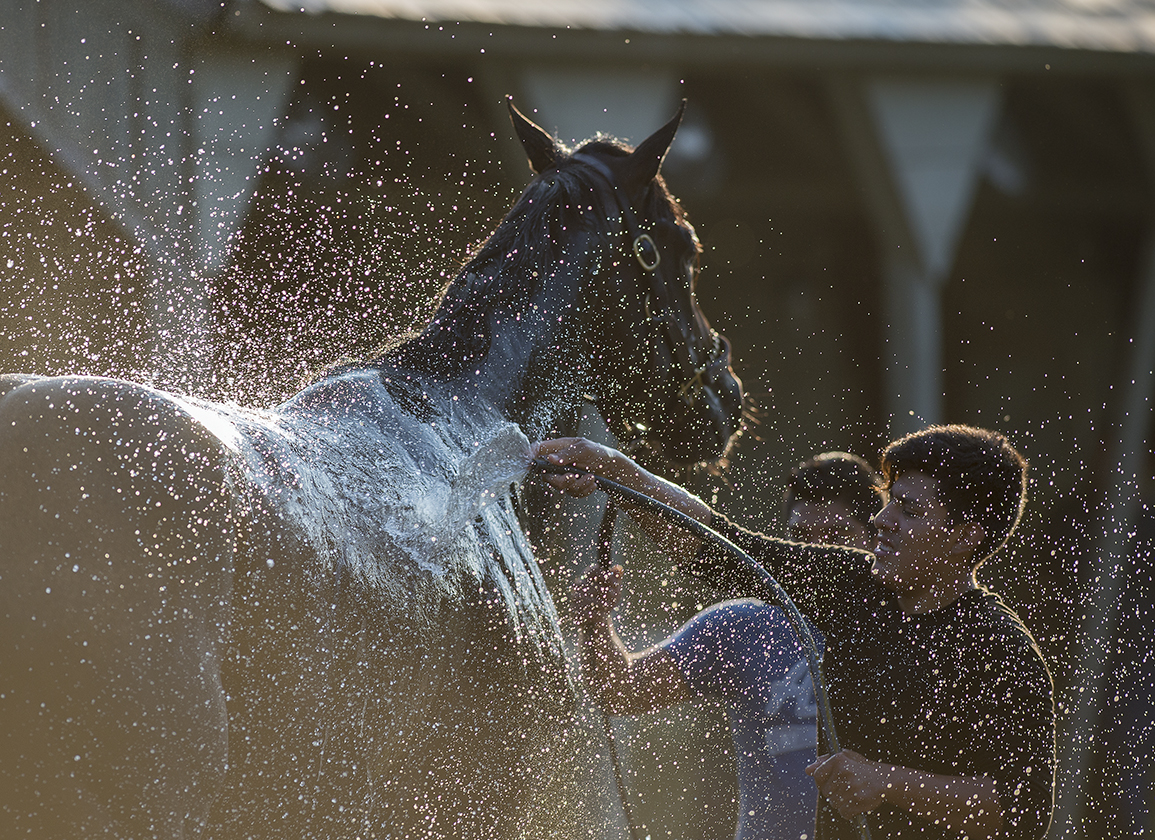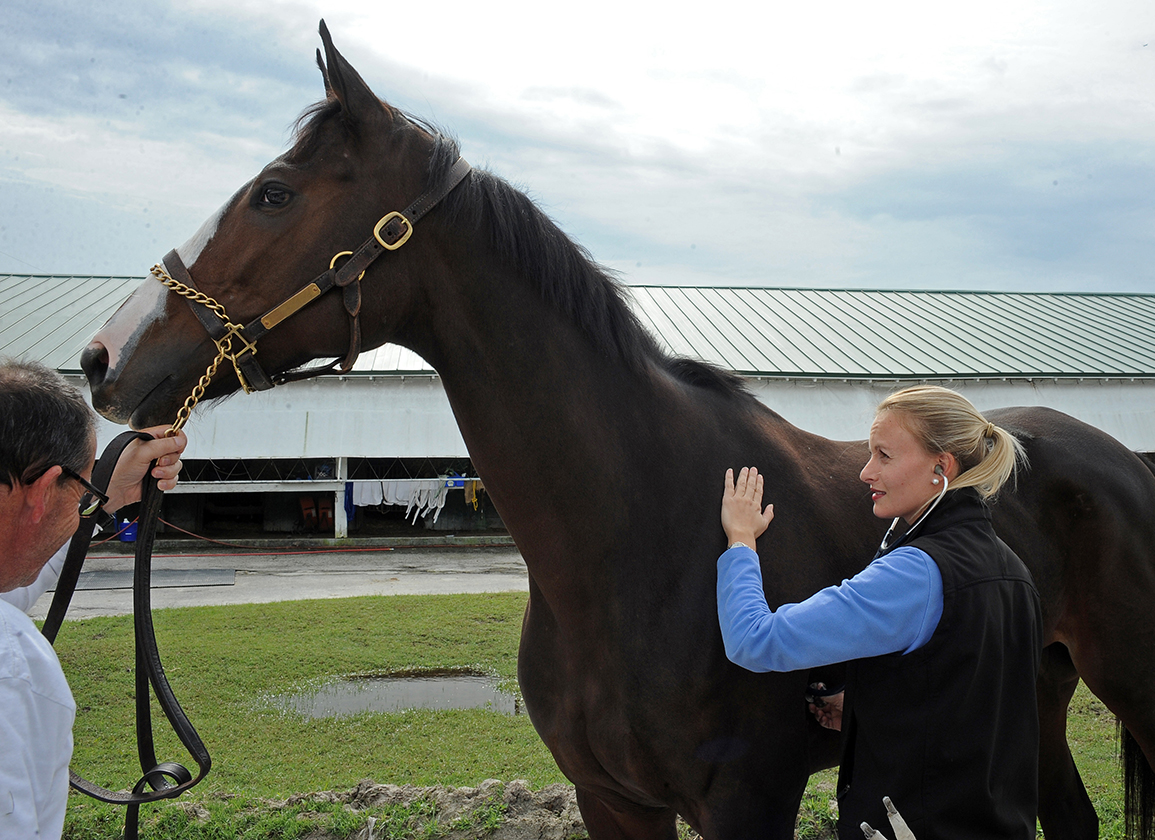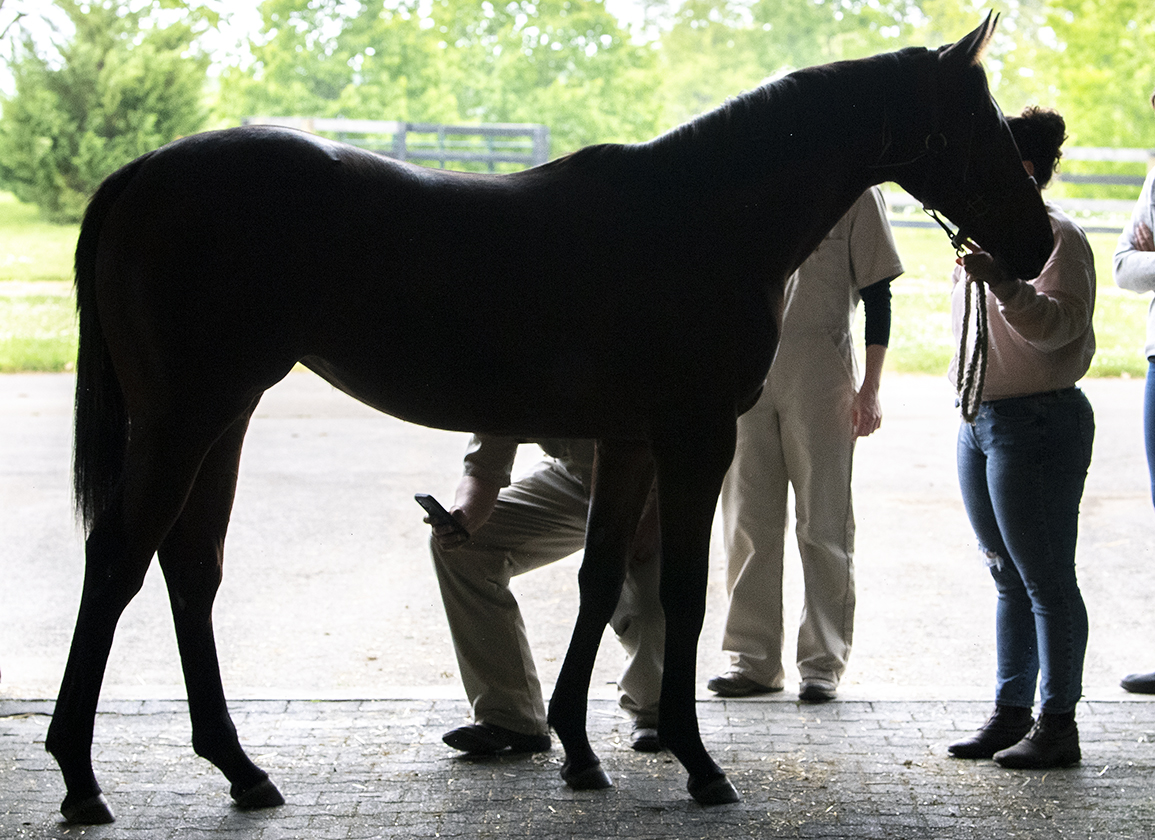The 69th Annual Round Table Conference on Matters Pertaining to Racing concluded Sunday with emphatic support for the Horseracing Integrity and Safety Act (HISA) by The Jockey Club Chairman Stuart S. Janney III, who presided over the conference and referenced in his closing remarks the arguments made by groups in the racing industry that have stated their opposition to HISA.
“When the history of this is written, it will be clear who the obstructionists were and who opposed this industry's best ever opportunity to right our badly listing ship,” Janney said. “I am proud to stand with those who support HISA, and I look forward to the needed reform it will bring to our industry and to seeing our ship finally sailing a straight course.”
Sunday's event was held virtually and streamed on jockeyclub.com and made available on NYRA's YouTube channel, Racetrack Television Network's respective platforms, and bloodhorse.com.
Janney was preceded by presentations from Charles Scheeler, chair of the Horseracing Integrity and Safety Authority board of directors, and Dr. Tessa Muir, director of Equine Science for the United States Anti-Doping Agency (USADA).
Scheeler described the components of the authority's work ahead, which include the establishment of an anti-doping and medication testing program and a safety program; constituency outreach; and utilizing the industry's plethora of data, much of which will be sourced from The Jockey Club's databases. In advance of the implementation of HISA next year, plans call for the authority's board and standing committees to publish proposed rules for public comment before they are submitted to the Federal Trade Commission.
“What I saw when [I looked at HISA] was a once-in-a-lifetime opportunity to make the sport safer for horses and jockeys, to serve the overwhelming majority of horse people who want to win fairly and who want to play by the rules…” Scheeler said.
Muir spoke of USADA's plans to work with the Thoroughbred industry, including leveraging expertise for both human and equine athletes to create best practices.
“Our aspiration is to establish and maintain a uniform and harmonized program that is centered on promoting and safeguarding the health and welfare of horses and protects the rights of all participants to race clean and win fairly,” she said.
Emily Lyman, founder and chief executive officer of Branch & Bramble, a digital marketing agency used by America's Best Racing (ABR), discussed how “social listening” online can be used to gauge public sentiment of horse racing and how highly publicized events can have a positive or negative impact on how the sport is viewed. She talked about how ABR's marketing strategy is influenced by this data and that influencers can be effectively used as brand ambassadors to introduce new audiences to horse racing.
“Maintaining the status quo doesn't protect a brand's long-term health,” Lyman said. “Without growth in impressions and public sentiment, your key audience will eventually die out.”
Will Duff Gordon, the chief executive officer of Total Performance Data (TPD), spoke in a presentation with Will Bradley, director and founder of Gmax Technology Ltd., on how TPD and Gmax have collaborated to create timing systems for horse races and how they are working with Equibase to determine how the tracking data can supplement and enhance the information that Equibase provides. They noted that this information will become more valuable with the expansion of sports betting in the United States.
“We do know from our European experience that sports that have the richest set of data, as well as pictures, as well as odds, capture the most betting turnover and handle,” Gordon said.
Dr. Yuval Neria, professor of Medical Psychology at Columbia University and director of the PTSD Research Center, was joined by Dr. Prudence Fisher, associate professor of Clinical Psychiatric Social Work at Columbia University, to talk about the Man O' War Project, which was founded by Ambassador Earle I. Mack. It is the first university-led research study to examine the effectiveness of equine-assisted therapy (EAT) in treating veterans with post-traumatic stress disorder.
Neria described the findings as “extremely encouraging,” noting measurable changes in the parts of the brain involved in the capacity to seek and experience pleasure among trial participants. There were also decreases in symptoms of post-traumatic stress disorder and depression.
Moving forward, plans call for the creation of the Man O' War Center, with goals to train others in EAT protocol for veterans, adopt the protocol for other groups, pursue a larger research study, and expand the use of former racehorses for equine-assisted therapy work.
“We are proud to partner with the Thoroughbred Aftercare Alliance to connect groups trained in the Man O' War protocol with accredited aftercare facilities,” said Fisher. “It's a great way to incorporate more retired Thoroughbreds in EAT programs throughout the country.”
Kristin Werner, senior counsel for The Jockey Club and administrator of The Jockey Club's Thoroughbred Incentive Program, moderated an aftercare panel with panelists Erin Crady, executive director, Thoroughbred Charities of America (TCA); Brian Sanfratello, executive secretary, Pennsylvania Horse Breeders Association (PHBA); Beverly Strauss, executive director, MidAtlantic Horse Rescue; and Dr. Emily Weiss, vice president, Equine Welfare, American Society for the Prevention of Cruelty to Animals (ASPCA).
Each panelist shared their perspectives on challenges in the aftercare landscape, from securing a safe first exit from the racetrack to placing retired breeding stock. Crady talked about the TCA's Horses First Fund, which helps Thoroughbreds in case of an emergency.
“Plan, plan, and plan some more,” Crady said. If you've prepared a business plan for your racing operation, include a section on aftercare.
“Please remember one thing that I feel is paramount to your horse's future. Make every effort to retire your horse while he or she is still sound. A sound Thoroughbred can have an unlimited future.”
Strauss talked about the kill buyer market and the frequent social media frenzies when Thoroughbreds are offered for inflated prices to save them from being sold to slaughter. She warned that individuals and organizations that participate in these practices are often scams.
“If you're contacted because one of your former horses is in a kill pen, do some research, don't just throw money at it, don't just send money blindly, do research and see that the horse truly is in a bad place and then ensure its safety,” Strauss said.
Sanfratello detailed the PHBA's stance on aftercare and its creation of a code of ethics that will sanction those who knowingly send horses registered with the PHBA to slaughter.
“Our board understands that aftercare is just as important as making sure that we increase the numbers of mares bred,” Sanfratello said.
Weiss focused on the work of the ASPCA's Right Horse Initiative, which assists with placing horses in transition. She noted that a problem seen with placing horses is that Thoroughbreds are often not located where the demand for them exists.
“There's some disconnect between the interest in the general public and getting these horses into their hands, and part of that is just getting those horses where those people are,” she said.
David O'Rourke, the president and chief executive officer of the New York Racing Association (NYRA), provided an update on that organization's efforts to promote safety, integrity, and the sport of racing. According to O'Rourke, NYRA has allotted 50% of its capital budget since 2013 to infrastructure improvements such as new track surfaces, barns, and dormitories. He also addressed the legalization of sports betting and NYRA's belief that this represents a critical opportunity for horse racing to expand its wagering options and boost handle
James L. Gagliano, president and chief operating officer of The Jockey Club, delivered a report on the activities of The Jockey Club.
Also in his closing remarks, Janney announced that Len Coleman and Dr. Nancy Cox, co-chairs of the nominating committee of the Horseracing Integrity and Safety Authority, have been awarded The Jockey Club Medal for exceptional contributions to the Thoroughbred industry.
A video replay of the conference will be available on jockeyclub.com this afternoon, and full transcripts will be available on the same site this week.
The Jockey Club Round Table Conference was first held on July 1, 1953, in The Jockey Club office in New York City. The following year, it was moved to Saratoga Springs, N.Y.
The Jockey Club, founded in 1894 and dedicated to the improvement of Thoroughbred breeding and racing, is the breed registry for North American Thoroughbreds. In fulfillment of its mission, The Jockey Club, directly or through subsidiaries, provides support and leadership on a wide range of important industry initiatives, and it serves the information and technology needs of owners, breeders, media, fans, and farms. It founded America's Best Racing (americasbestracing.net), the broad-based fan development initiative for Thoroughbred racing, and in partnership with the Thoroughbred Owners and Breeders Association, operates OwnerView (ownerview.com), the ownership resource. Additional information is available at jockeyclub.com.
The post Jockey Club Round Table: HISA ‘Best Ever Opportunity To Right Our Badly Listing Ship’ appeared first on Horse Racing News | Paulick Report.











